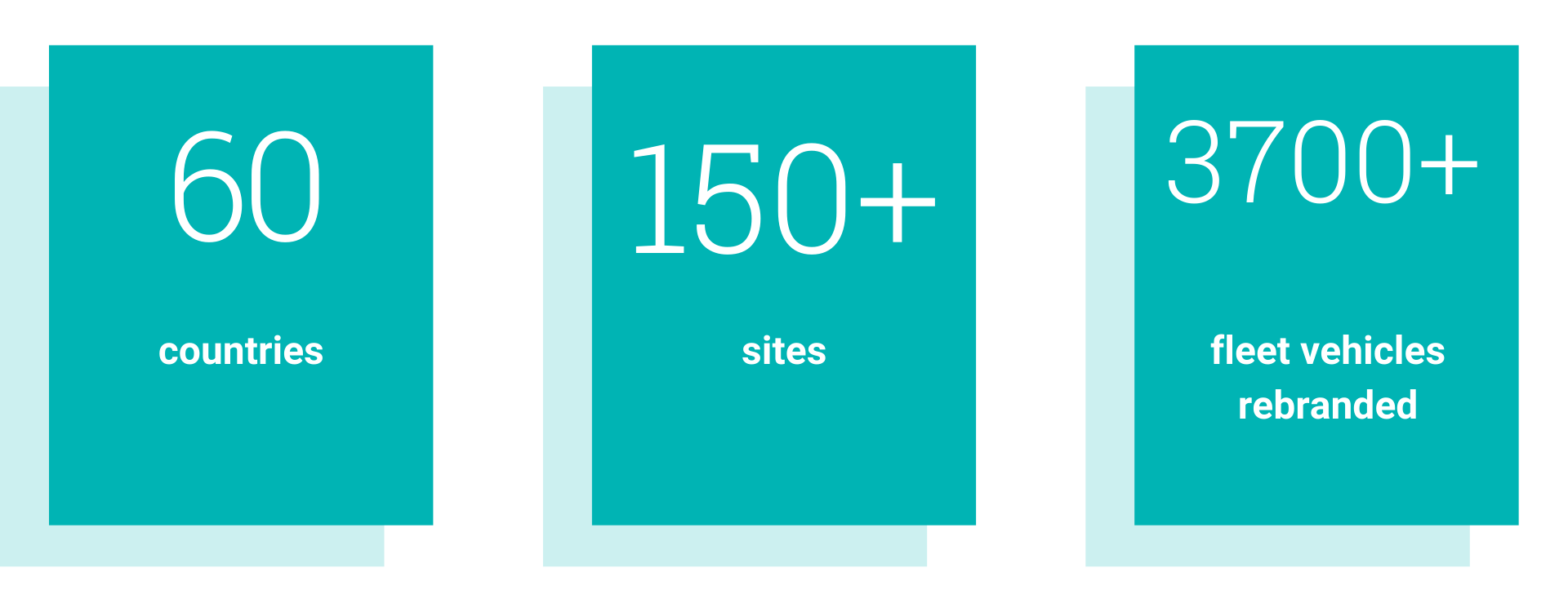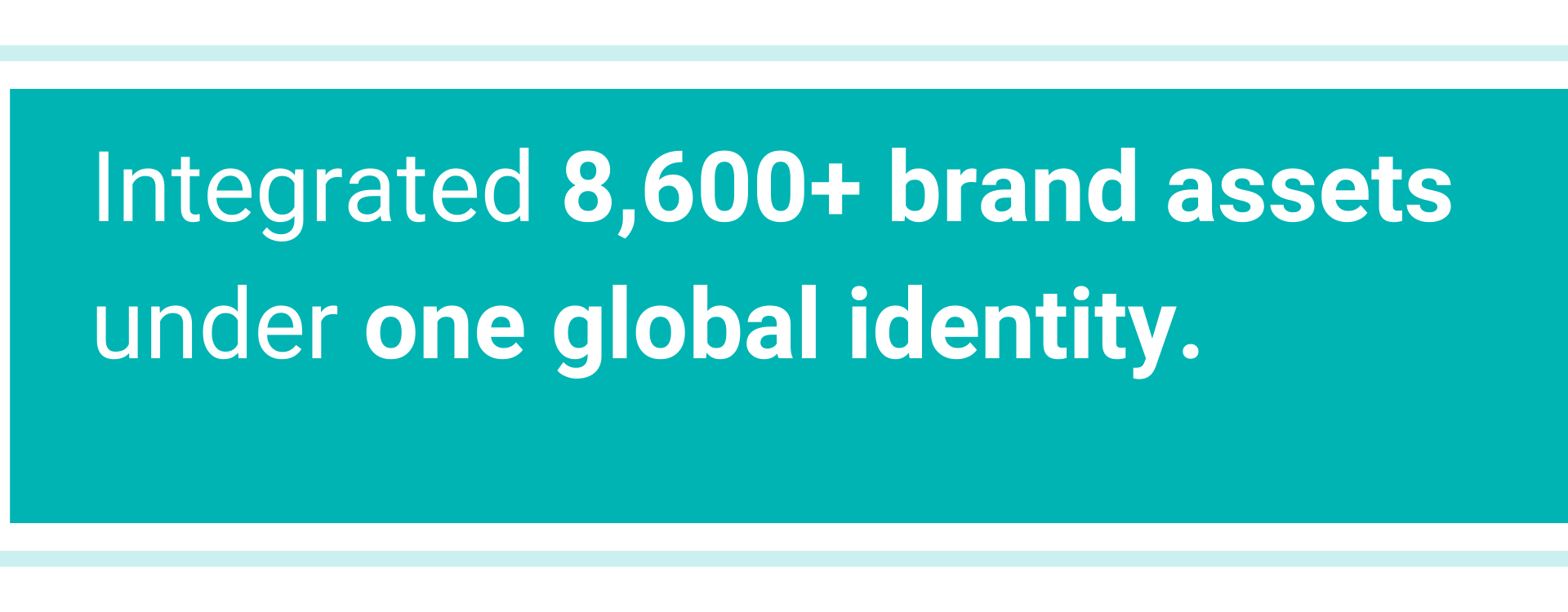Anonymized Client Forging a cohesive future: A global manufacturing technology company rebrands to reflect a climate-focused mission

Client Profile
Industry: Manufacturing
Employees: 45,000
System Size: 150+ sites across 60 countries
Revenue: $20B (global)
BrandActive Services: Signage guidelines and standards, branded environments standards, brand governance models
The Situation
This manufacturing company is a global climate innovator delivering sustainable solutions for heating, cooling, and refrigeration. When the company underwent a transformative corporate restructuring, it faced a rare and complex opportunity: reinvent itself, not just in name, but in purpose, brand, and global presence.
After decades operating as part of a larger corporate entity, the business was formally separated and restructured as an independent company through a strategic corporate transaction. This high-stakes move required the complete removal of legacy branding within 12-18 months and the launch of a new identity for the climate-focused organization that would become a newly independent global brand.
This sweeping transformation involved:
- Legal urgency: The legacy brand had to be removed from the thousands of legacy company assets, and fast.
- Architectural complexity: 20+ legacy brands needed reevaluation, each with different degrees of independence and equity.
- Cultural opportunity: Employees who had long identified with the legacy company needed to see themselves, and their future, in this new brand.
The organization had one shot to get this right: to align every region, business unit, and employee under a new climate-forward vision while maintaining operational continuity and brand equity.

The Challenge
Global rebrands are never simple. For this company, the scale and sensitivity added exceptional complexity:
- Geographic footprint: Geographic footprint: 150+ sites across 60 countries, spanning three distinct business units, including commercial and residential climate systems and temperature-controlled transport solutions.
- Asset diversity: Over 8,600 branded assets, including 3,750+ vehicles, 600+ IT systems, product packaging, ID badges, uniforms, marketing materials and countless others. Brand guidelines existed, but they didn’t explain how to apply them to cross-branded locations. For example, the company had strong product brands that had their own branding at locations, we had to understand and evaluate how co-branding would happen and where and when to apply corporate brand vs. product brands.
- Endorsement entanglement: Many product brands were co-branded with the legacy company. Untangling this joint branding required careful brand equity assessment and surgical asset decisions.
- Matrixed governance: Rebranding impacts nearly everyone across an organization. Cross-functional teams spanned marketing, IT, supply chain, legal, operations, HR, and regional leads. Decision-making had to be fast, collaborative, and coordinated across continents and time zones.
- Emotional complexity: The new brand had to resonate internally as much as externally. This wasn’t just asset conversion – it was organizational identity transformation.
Strategic Foundation: Scenario Planning and Decision Modeling
Before execution could begin, BrandActive partnered with the company’s Enterprise Strategic Marketing team to run a rigorous scenario planning process – helping the organization understand the full cost, complexity, and implications of its rebrand path.
At the time, the new name hadn’t even been finalized. By engaging early, we were able to provide strategic foresight that shaped brand architecture and rollout strategy.
We developed and modeled two rebrand scenarios:
- Scenario A: Compressed Timeline
- Completed within 12–18 months
- Higher near-term costs but aligned tightly with legal timelines and brand momentum
- Focused on global consistency and coordinated conversion of priority assets
- Scenario B: Phased Rollout
- Staggered execution over 3+ years
- Spread financial impact, but posed risk to consistency and stakeholder perception
- Required heavier governance, long-term program oversight
Each scenario was modeled in detail, with cost forecasts broken down by:
- CapEx vs. OpEx allocations
- Conversion by geography and asset type (signage, fleet, uniforms, packaging, etc.)
- Resource and vendor requirements
To guide leadership decision-making, we benchmarked costs and brand asset complexity against peer organizations in the industrial, manufacturing, and climate innovation sectors – bringing real-world comparables into the boardroom.
We didn’t just present numbers. We worked hand in hand with the company choose a path forward that balanced urgency, clarity, and cost-efficiency.
Ultimately, the company adopted a hybrid model, front-loading high-impact legal and visible assets while phasing in others over time. That clarity fueled confident governance, budget alignment, and rapid mobilization.
Our Approach
With a clear path in place, we moved into execution readiness. Our work together included:
- Comprehensive asset audits across all regions and functions
- Strategic prioritization using a three-path decision framework:
- Retire – Remove assets no longer needed
- Neutralize – Remove legacy branding without replacement
- Rebrand – Fully convert to the new brand identity
- Matrixed governance structure, enabling real-time collaboration across global workstreams
- Scenario-informed playbooks for execution by asset type, geography, and stakeholder group
This foundational work allowed the organization to move forward with confidence, consistency, and speed.
Operational Execution
Turning strategy into reality required global orchestration. Together, we:
- Coordinated 150+ site rebrands across 60 countries
- Converted 3,750+ fleet vehicles and 600+ IT systems
- Updated all high-touch assets, from packaging and uniforms to ID badges, signage, and marketing platforms
- Built scalable systems for ongoing brand governance, including sign and branded environments standards for future acquisitions
The company set a new standard for how brand operations were governed, scaled, and sustained organization-wide.
The Outcome: A Unified Global Brand Built for Growth
The rebrand unified a decentralized brand architecture, delivered compliance at scale, and rallied employees under a purpose-driven identity aligned with the organization’s climate mission.

Lasting impacts:
- Integrated 8,600+ brand assets under one global identity
- Established scalable processes for future M&A and brand rollouts
- Delivered significant cost optimization by reducing vendor overlap, leveraging phased investments, and focusing resources where brand impact was highest
- Increased internal brand adoption and employee alignment with the company’s sustainability-focused vision
Ready to Rebrand with Clarity and Confidence?
Contact Jennifer Farrelly to explore how BrandActive can help you build a brand system that drives real business outcomes.
Respecting Client Privacy
Some of our most transformative work is featured anonymously, not because it’s confidential, but because our clients, often leaders in their industries, are more comfortable sharing their journey without the spotlight. By respecting this preference, we’re able to highlight real impact and measurable results while honoring the trust that fuels our most effective partnerships